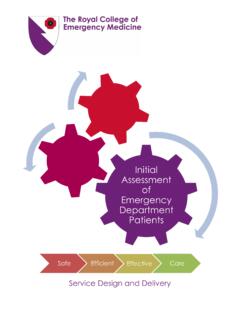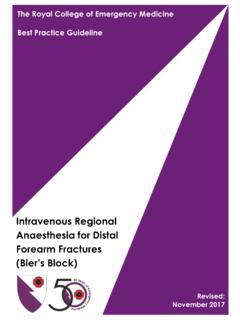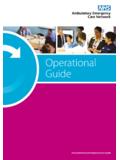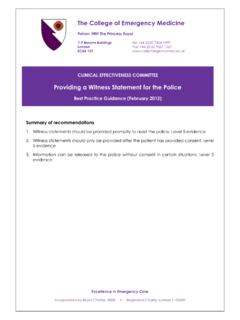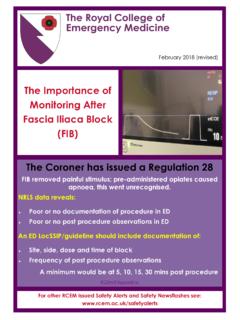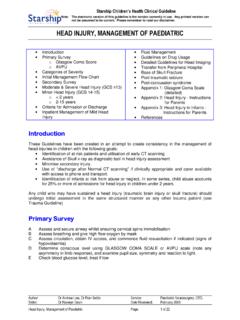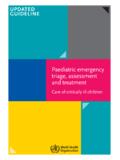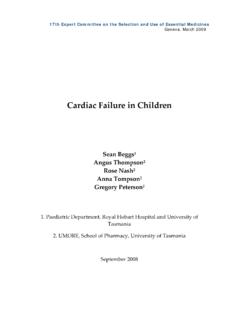Transcription of Position Statement Paediatric Trauma - Stabilisation of ...
1 Patron: HRH The Princess Royal 7-9 Bream s Buildings Tel +44 (0)207 404 1999 London Fax +44 (0)207 067 1267 EC4A 1DT Position Statement Paediatric Trauma - Stabilisation of the Cervical Spine 16 August 2017 The Royal College of Emergency Medicine (RCEM) recognises that there are some discrepancies in the teaching of how Stabilisation of the cervical spine should be achieved during the initial assessment of children who have suffered traumatic injury. RCEM recognises too that in some Trauma systems there has been a move away from the use of hard cervical collars for immobilisation of the cervical spine and that such collars often do not fit children (particularly young children) well. Cervical cord injury is a devastating injury and secondary injury must be prevented. At the same time a pragmatic approach must be used with children in whom attempts at immobilisation may cause significant distress and agitation such that harm may result.
2 Cervical immobilisation should be used in all children with a potential cervical spine injury until such an injury has been ruled out by appropriate clinical assessment and imaging (if imaging is indicated). RCEM supports the approach taken in the Advanced Paediatric Life Support1 course of favouring manual in-line Stabilisation (MILS) in conscious children. RCEM also recognises that MILS cannot be maintained at all times and that other methods of immobilisation will be needed and are also indicated in unconscious children. In line with 2016 NICE Guidance2, RCEM recognises that there are possible disadvantages to use of a hard collar such as increasing intra-cranial pressure through reduced venous drainage and the potential for pressure area sores. Nonetheless the use of a properly fitting collar, applied by a competent individual, should still be considered an effective tool for the prevention of secondary spinal cord injury and should be used when tolerated in addition to blocks / rolled blankets and tape.
3 The lack of evidence for cervical collars preventing harm should not be considered to represent evidence that they do not provide benefit. In summary: The cervical spine must, wherever possible, be stabilised until a cervical spine injury is ruled out If attempts at immobilising the cervical spine are causing distress and agitation an assessment of the risks and benefits of continued attempts at immobilisation must be made. In conscious children use manual in-line Stabilisation whenever possible In unconscious children or when MILS cannot be maintained immobilisation should be with a properly fitting collar, blocks and tape. If no properly fitting collar is available then blankets etc should be used to improvise an immobilisation device. References 1. Advanced Life Support Group. Advanced Paediatric Life Support: A Practical Approach to Emergencies (APLS) 6th Edition.
4 Wiley-Blackwell 2016 2. NICE Guideline NG41 Spinal injury: assessment and initial management. Available from: #assessment-and-management-in-prehospita l-settings. Accessed


